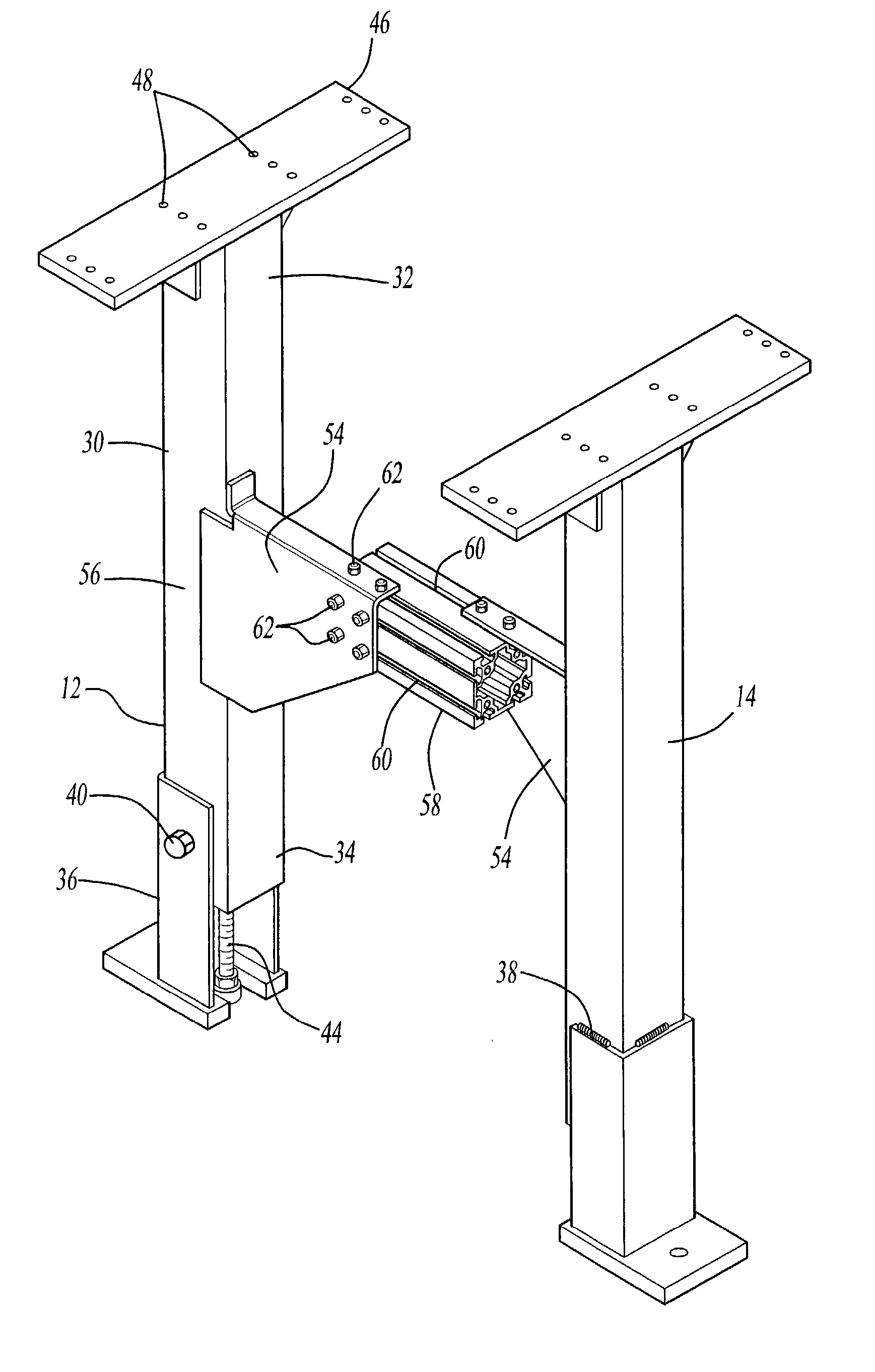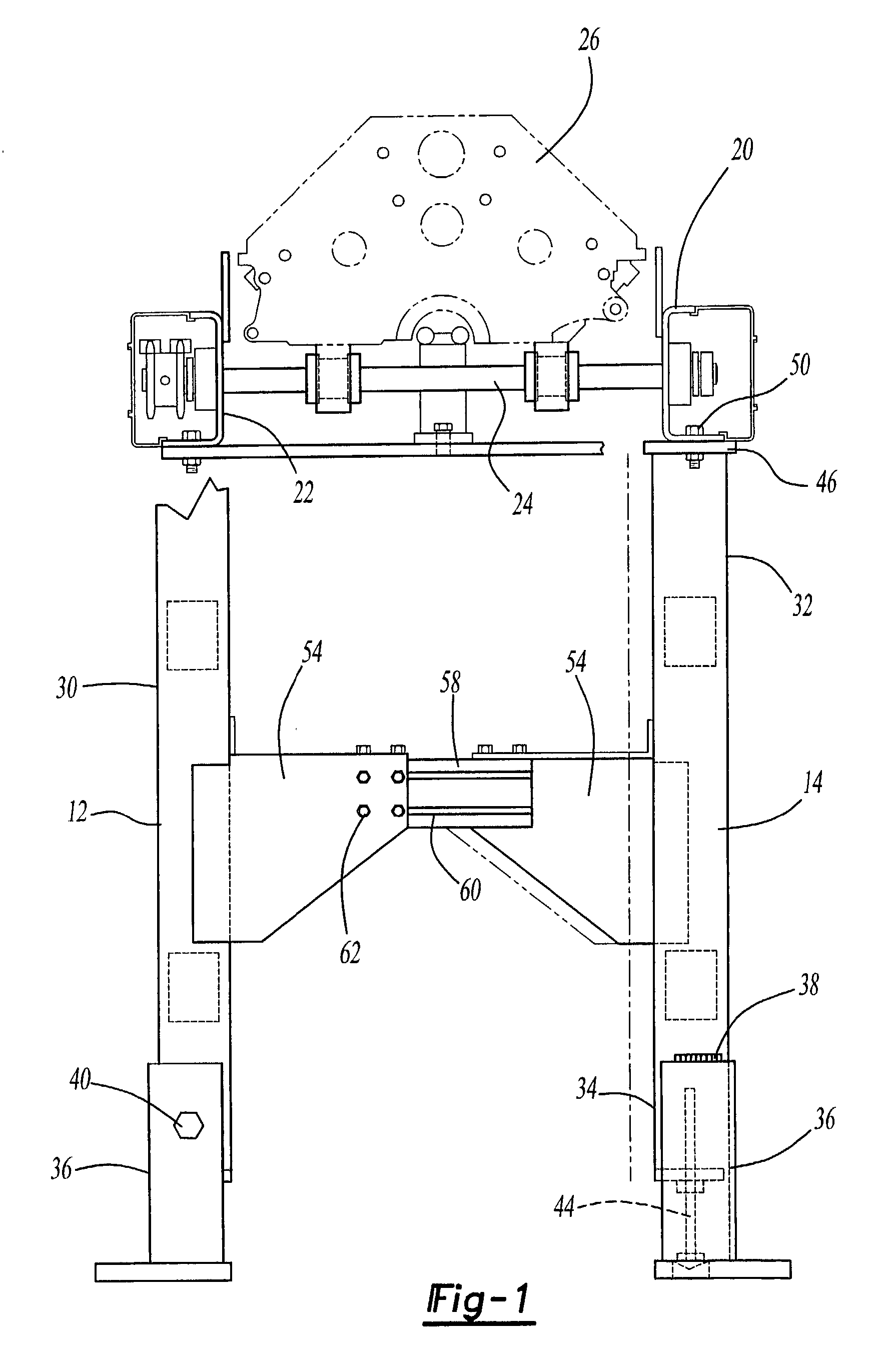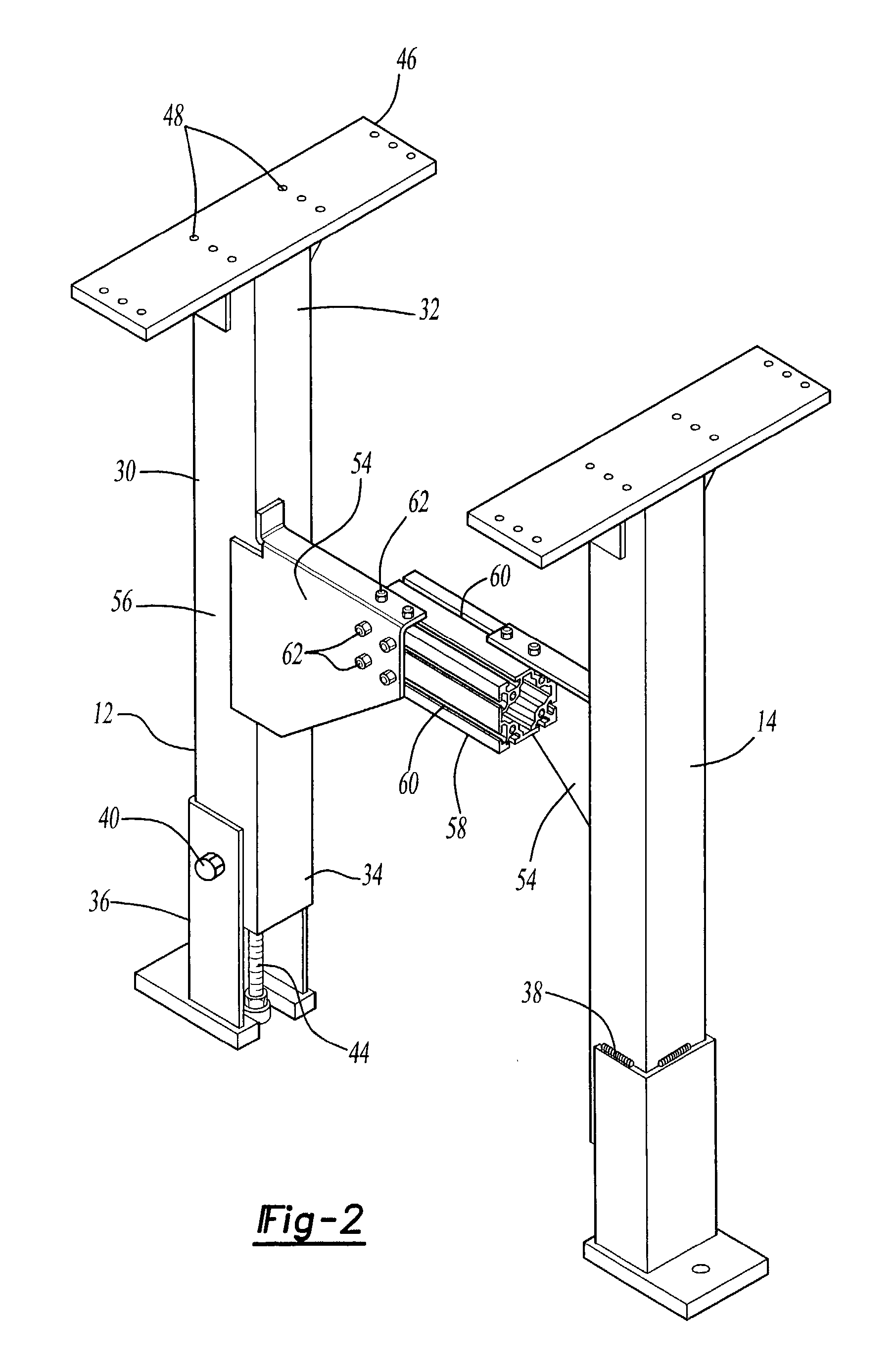Modular roller conveyor system
a conveyor system and module technology, applied in the field of conveyor systems, can solve the problems of high manufacturing cost, high production cost, high labor intensity, etc., and achieve the effect of inexpensive replacement of roller assemblies
- Summary
- Abstract
- Description
- Claims
- Application Information
AI Technical Summary
Benefits of technology
Problems solved by technology
Method used
Image
Examples
Embodiment Construction
[0019] With reference first to FIG. 4, a preferred embodiment of the roller conveyor system 10 of the present invention is there shown and comprises a first pair of elongated vertical supports 12 and 14 and a second pair of elongated vertical supports 16 and 18. The first pair of vertical supports 12 and 14 are spaced from the second pair of vertical supports 16 and 18.
[0020] A first elongated rail 20 is disposed along and supported by an upper end of the vertical supports 14 and 18. Similarly, a second elongated rail 22 is secured to and supported by an upper end of the other vertical supports 12 and 16 so that the rails 20 and 22 are spaced apart and parallel to each other. Preferably, the rails 20 and 22 are manufactured in preset modular lengths, such as ten foot or twelve foot lengths.
[0021] Still referring to FIG. 4, a plurality of roller assemblies 24 are disposed between and supported by the rails 20 and 22 so that the roller assemblies 24 are spaced apart and parallel to ea...
PUM
 Login to View More
Login to View More Abstract
Description
Claims
Application Information
 Login to View More
Login to View More - R&D
- Intellectual Property
- Life Sciences
- Materials
- Tech Scout
- Unparalleled Data Quality
- Higher Quality Content
- 60% Fewer Hallucinations
Browse by: Latest US Patents, China's latest patents, Technical Efficacy Thesaurus, Application Domain, Technology Topic, Popular Technical Reports.
© 2025 PatSnap. All rights reserved.Legal|Privacy policy|Modern Slavery Act Transparency Statement|Sitemap|About US| Contact US: help@patsnap.com



